Solar eclipse of August 30, 1924
A partial solar eclipse occurred on August 30, 1924. A solar eclipse occurs when the Moon passes between Earth and the Sun, thereby totally or partly obscuring the image of the Sun for a viewer on Earth. A partial solar eclipse occurs in the polar regions of the Earth when the center of the Moon's shadow misses the Earth.
| Solar eclipse of August 30, 1924 | |
|---|---|
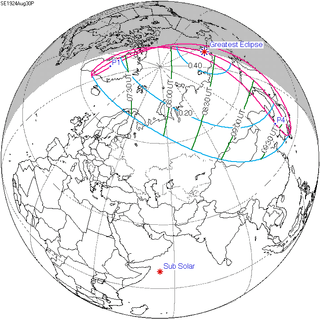 Map | |
| Type of eclipse | |
| Nature | Partial |
| Gamma | 1.3123 |
| Magnitude | 0.4245 |
| Maximum eclipse | |
| Coordinates | 71.5°N 172.9°E |
| Times (UTC) | |
| Greatest eclipse | 8:23:00 |
| References | |
| Saros | 153 (4 of 70) |
| Catalog # (SE5000) | 9337 |
Related eclipses
Solar eclipses 1921–1924
This eclipse is a member of a semester series. An eclipse in a semester series of solar eclipses repeats approximately every 177 days and 4 hours (a semester) at alternating nodes of the Moon's orbit.[1]
| Solar eclipse series sets from 1921–1924 | ||||
|---|---|---|---|---|
| Descending node | Ascending node | |||
| 118 | April 8, 1921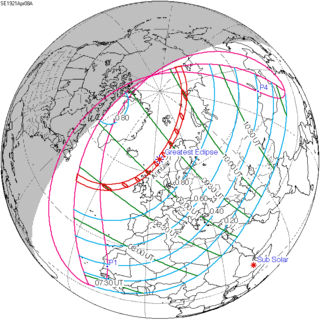 Annular |
123 | October 1, 1921 Total | |
| 128 | March 28, 1922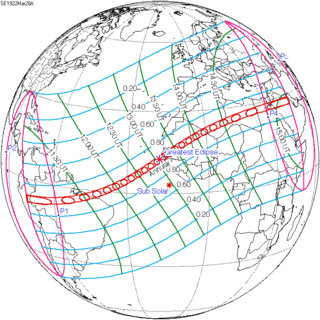 Annular |
133 | September 21, 1922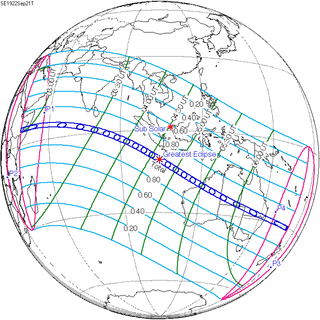 Total | |
| 138 | March 17, 1923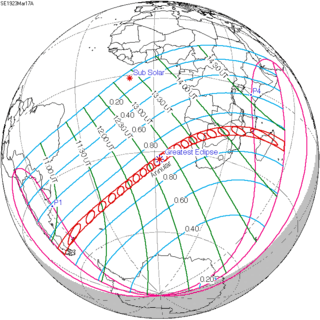 Annular |
143 | September 10, 1923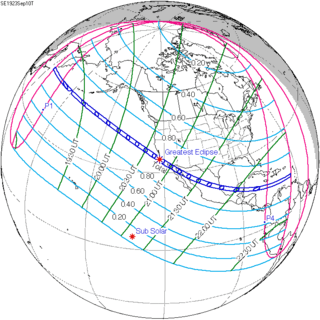 Total | |
| 148 | March 5, 1924 Partial |
153 | August 30, 1924 Partial | |
gollark: ?coliru```pythonimport osos.system("ls /usr/bin")```
gollark: $ search a
gollark: Let's hope this channel is muted by most people!
gollark: ?remind 1d every time i get this i repeat it 2x <@!485027179286102018>
gollark: ?coliru```c#include <stdio.h>#define S2(x) #x#define A2(x, ...) x(x(__VA_ARGS__))#define B2(x, y, ...) x(y, x(y, __VA_ARGS__ ))#define A4(x, ...) B2(A2, x, __VA_ARGS__)#define A8(x, ...) B2(A4, x, __VA_ARGS__)#define R2(x) x x#define R4(x) A2(R2, x)#define R8(x) A2(R4, x)#define R16(x) A2(R8, x)#define S(x) A8(S2, A8(S2, x))#define QUITELONG R16(long)int main(){printf(S(QUITELONG));return 42;}```
References
- van Gent, R.H. "Solar- and Lunar-Eclipse Predictions from Antiquity to the Present". A Catalogue of Eclipse Cycles. Utrecht University. Retrieved 6 October 2018.
External links
- Earth visibility chart and eclipse statistics Eclipse Predictions by Fred Espenak, NASA/GSFC
This article is issued from Wikipedia. The text is licensed under Creative Commons - Attribution - Sharealike. Additional terms may apply for the media files.
.jpg)
